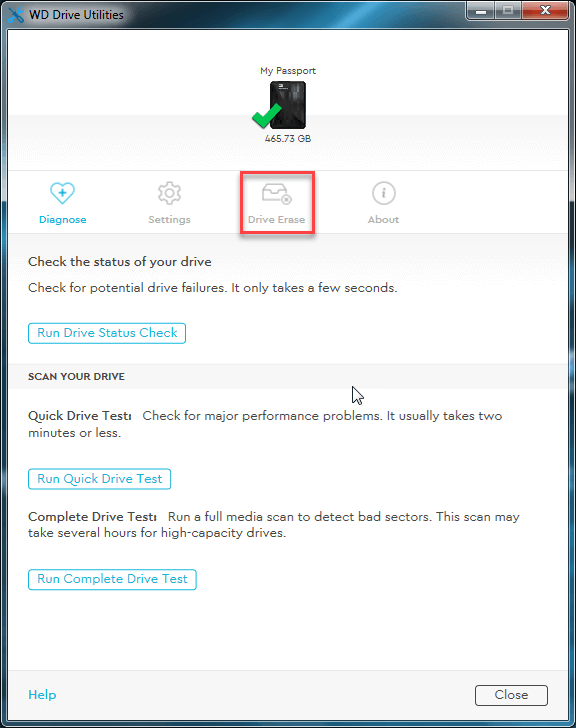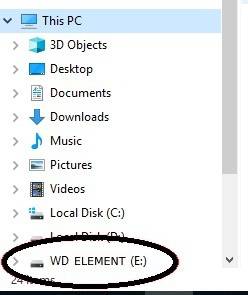

- #Reformatting wd elements for mac and windows mac os x#
- #Reformatting wd elements for mac and windows mac os#
- #Reformatting wd elements for mac and windows full#
- #Reformatting wd elements for mac and windows pro#
- #Reformatting wd elements for mac and windows Pc#
When naming your drive choose a name that is easy for you to remember.
#Reformatting wd elements for mac and windows mac os#
Will change from NTFS to Mac OS Extended (Journaled) file system. Utility now takes a few minutes to format your WD Elements drive. On Erase on the bottom right of the pop up window. By clicking there you open up the up down arrows to expand the list of The red arrow on the picture shows you where toĬlick. Time round you format your Elements drive to Mac OS Extended (Journaled) file Giving the name Untitled at this point is Going through this stage of the formatting twice. Your WD Elements drive comes with a USB cable that has a type A connector that plugs into your Mac. Want to make sure there’s enough power to drive the drive. Why?ĭon’t want your Mac’s battery to fail half way through formatting your Western
#Reformatting wd elements for mac and windows pro#
Want to think about connecting your MacBook Pro or Air to external power. Your WD Elements Drive Work Out of the Box on your Mac and PC?
#Reformatting wd elements for mac and windows Pc#
Your WD Elements With a Partition for Mac and PC Want a separate area on Your WD Elements drive for Mac and PC? See your WD Elements external drive on your desktop? Starting Your WD Elements Mac and PC Formatting

We have a guide for backing up a Mac, as well as backing up a PC.View of Formatting WD Elements for a Mac and a PC Now that you have your drive formatted based on how you plan to use it, take a few minutes and make sure you're backing up your computer. Going forward, you should be able to use the drive and its dual partitions on their respective operating systems. Give your settings a final lookover and click Apply. Then click the second partition, name it Mac and change its format to APFS. Name one partition Windows and change its format to exFAT. For example, you might want more storage for your Mac than you do for your PC. Click the + sign to add a second partition, then drag the lines to adjust the size of each partition. Select the drive from the left sidebar, then click the Partition tab. To do that, connect the empty external HD to your Mac and launch Disk Utility. You won't be able to write to the Mac side from your Windows computer, and vice versa, but it's a good solution for people who want all the advantages each format has to offer for its respective system.

For example, if you have a 1TB hard drive, 500GB of storage can be used with your Windows computer, and 500 will be dedicated to your Mac computer. This solution is a little different than the previous two because instead of having one hard drive that works with both machines, you're splitting your HD into two sections, each dedicated to a different OS. Option 3: Create two partitions on your hard drive to use with each OS, separately. You aren't stuck with your drive formatted for one platform forever. With it installed, you'll be able to read/write to APFS drives on a Windows PC. Option 2: Format to APFS and use a different Paragon appĬonversely, you can format the HD to APFS and use Paragon's APFS for Windows to read and write to the Mac-formatted hard drive. It's $20, and is compatible with all Macs, even the more recently announced M1 Macs. In order to enable read/write access, you'll need to purchase a third-party solution such as Paragon NTFS. In other words, you can look at files saved on the drive, but you can't save any new files from your Mac. If you keep your hard drive's out-of-the-box NTFS format, you'll be able to read the drive when it's connected to a Mac, but you won't be able to write to it. Option 1: Format to NTFS and buy this app for your Mac The alternative solutions do require more tinkering. The good news is, it's not exFAT or nothing. OK, what are my alternatives to using exFAT? And the same can be said for a Windows HD, if you only plan on connecting it to a PC, then NTFS is the way to go. However, if you plan on only using a drive on your Mac and it has MacOS High Sierra or newer installed, you'll want to stick to Apple's APFS format.

And if that's how you plan on using your drive, then you're right - exFAT is the way to go. It comes down to which OS are you going to use the drive with?Īccording to the list above, formatting your hard drive to exFAT so that you can read and write on either a PC or Mac seems like the obvious solution.
#Reformatting wd elements for mac and windows mac os x#
#Reformatting wd elements for mac and windows full#


 0 kommentar(er)
0 kommentar(er)
